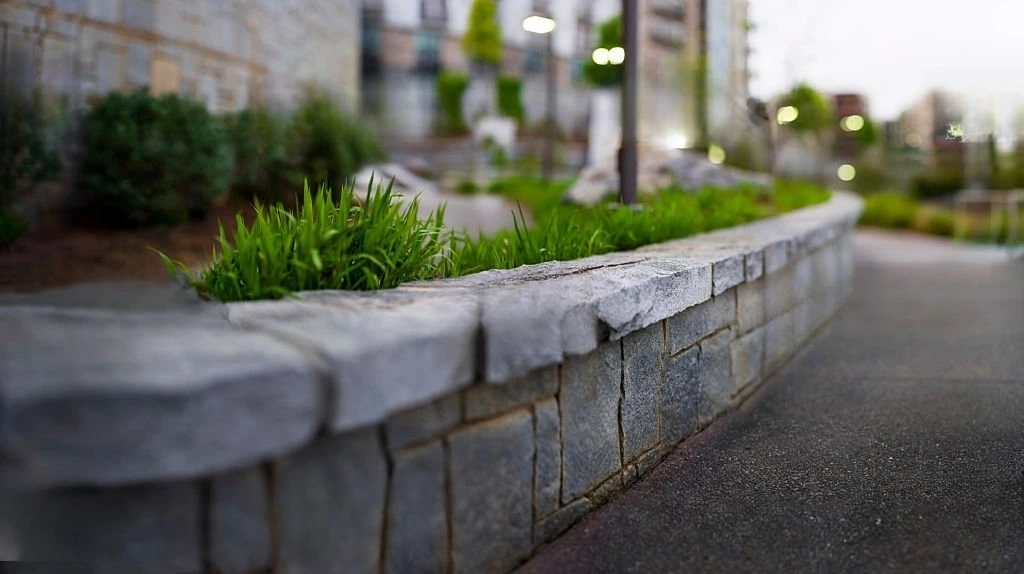Retaining walls are an essential component of many landscaping and construction projects. They provide structural support and prevent soil erosion, helping to keep landscapes and buildings stable and safe. Concrete retaining walls are particularly popular due to their durability and strength.
Concrete retaining wall design is a complex process that involves various factors such as the height of the wall, soil conditions, and the weight of the material to be retained. One important aspect of retaining wall designs is the inclusion of weep holes.
Weep holes in retaining walls are small openings located near the bottom of the wall that allow water to drain out. They are typically placed at regular intervals along the length of the wall and are essential for preventing hydrostatic pressure buildup behind the wall.
When water accumulates behind a retaining wall, it can create a significant amount of pressure. This pressure can cause the wall to crack, tilt, or even collapse, leading to costly repairs and potential safety hazards. Weep holes allow water to drain out of the soil behind the wall, reducing the pressure and minimizing the risk of damage.
Concrete retaining wall blocks are often designed with built-in weep holes to ensure proper drainage. However, it is still essential to ensure that the weep holes are clear and free from any obstructions that could impede drainage.
Weep holes are an essential component of concrete retaining wall design. They help to prevent water buildup and reduce the risk of damage to the wall. When designing and constructing retaining walls, it is crucial to include weep holes at regular intervals and ensure that they are kept clear and functional.
How To Straighten A Leaning Retaining Walls?
Retaining walls are essential for landscaping projects, as they help prevent soil erosion and provide structural support. However, over time, even well-built retaining walls can start to lean, creating a safety hazard and diminishing their effectiveness.we will discuss how to straighten a leaning retaining wall.
Firstly, it is important to identify the cause of the leaning. Poor concrete retaining wall design, lack of proper drainage, or using the wrong materials, such as low-quality concrete retaining wall block, can all contribute to a retaining wall leaning. Once you’ve identified the cause, you can take corrective action.
One approach is to reinforce the wall with additional materials, such as steel beams or wooden supports, to help redistribute the weight and stabilize the wall. However, if the damage is extensive, you may need to replace the retaining wall altogether. In such cases, you should consider consulting a professional to ensure that the new retaining wall design is structurally sound and built to last.
To straighten a leaning retaining wall, you should first identify the cause of the leaning and take corrective action. Reinforcing the wall with additional materials or replacing the retaining wall altogether are two possible approaches.
What Is The Difference Between A Retaining Walls And A Levee?
When it comes to managing and controlling the flow of water in an area, two common structures are often used: retaining walls and levees. While they may appear similar, there are some key differences that set them apart.
A retaining wall is a structure that is designed to hold back soil and prevent it from sliding or eroding. It is typically made of concrete, though other materials such as brick or stone can also be used. A concrete retaining wall design will typically involve the use of large, heavy blocks that are stacked together to create a solid structure. Retaining wall designs must be engineered to withstand the pressure of the soil behind them and the weight of any objects placed on top of them.
A levee, on the other hand, is a natural or man-made embankment designed to contain and control the flow of water in a river or other body of water. It is typically made of earth or other natural materials, and is designed to withstand the force of flowing water.
While there are some similarities between retaining walls and levees, they serve different purposes and are designed differently. Retaining walls are used to hold back soil and prevent erosion, while levees are designed to contain and control the flow of water.
If you’re looking to prevent erosion or hold back soil, a concrete retaining wall block might be the right choice for you. If you’re looking to control the flow of water in a river or other body of water, a levee may be a better option.
What Is The Process For Building An Angled Retaining Walls?
When it comes to creating a sturdy and attractive retaining wall, an angled design can add visual interest while also providing stability. The process for building an angled retaining wall involves several key steps, including selecting the right materials, designing the structure, and properly constructing the wall.
Concrete retaining wall blocks are a common choice, as they are durable and easy to work with. Before purchasing any materials, it is important to consider the size of the wall, the slope of the land, and any additional features that may be incorporated into the design.
Once the materials have been selected, the next step is to design the retaining wall. This involves taking into account the height of the wall, the angle of the slope, and any additional features such as steps or curves. A concrete retaining wall design can be created using software or by consulting with a professional designer.
With the design in place, the construction process can begin. This involves excavating the area where the wall will be built, creating a level base, and installing the first row of retaining wall block. Additional rows of blocks are then added, each one slightly angled towards the back of the wall for stability.
As the wall is built, it is important to ensure that it is properly reinforced with geogrid, which is a mesh-like material that helps distribute the weight of the wall. The top of the wall should also be finished with coping stones or caps to provide a finished look.
Overall, building an angled retaining wall requires careful planning and attention to detail. By selecting the right materials, designing the structure, and following proper construction techniques, it is possible to create a beautiful and functional retaining wall that will last for years to come.





